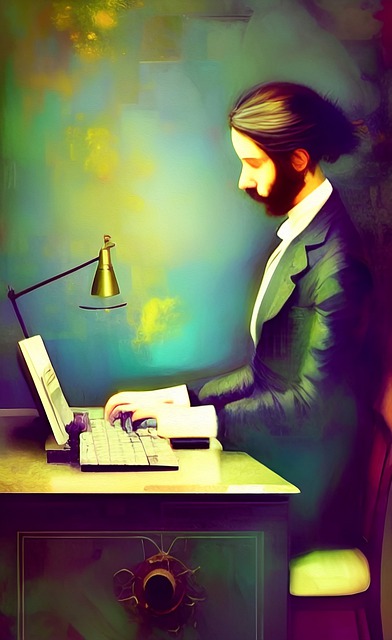Teaching AI writing in terms of co-authorship (opinion) – Inside Higher Ed
The next-level artificial intelligence capabilities of ChatGPT, a chat bot released in late November by the research company OpenAI, have inspired many predictions, both drastic and ecstatic, for the end of essay writing, if not education as we know it. While some in higher education view ChatGPT as a learning tool to be leveraged and others consider it a threat to be addressed exclusively thro…….

The next-level artificial intelligence capabilities of ChatGPT, a chat bot released in late November by the research company OpenAI, have inspired many predictions, both drastic and ecstatic, for the end of essay writing, if not education as we know it. While some in higher education view ChatGPT as a learning tool to be leveraged and others consider it a threat to be addressed exclusively through prohibition and plagiarism detection, nearly all agree that the technology’s ability to simulate human thinking and writing is remarkable, if not uncanny, and therefore worthy of our immediate attention. Whether we like it or not, HAL 9000 has transferred to our campus this spring semester. The real question now is definitional: On what terms should educators interact with writing generated from machines?
Though it has not received much notice, OpenAI proposes an answer that is usefully old-fashioned and worth pondering in our ongoing deliberations: we should interact as authors. In the many urgent discussions I have joined or observed in recent weeks about ChatGPT, I have been surprised to hear no mention of the fact that OpenAI has a Sharing & Publication Policy that not only could, but should, inform educational responses to the use of AI assistance in writing and learning. The policy is buried on the company’s main site (under its Terms and Policies), not referenced where users access ChatGPT. And yet, in its publication policy, OpenAI clearly articulates that all content generated through the use of ChatGPT and intended for publication as writing (they give as quaint examples “a book, compendium of short stories”) is to be understood and identified as “co-authored” by the user and the AI.
This metaphor of collaborative authoring might surprise many. It undercuts the assumption that AI-generated writing is automatic and autonomous in its originality, inviting the prompter to adopt it freely. Instead, the policy proposes ChatGPT as a means to facilitate but not replace an author’s writing. In fact, OpenAI expects a collaborative disclaimer, one in which the published content is “attributed” to a human author (or company) at the same time that the “role of AI in formulating the content is clearly disclosed in a way that no reader could possibly miss.”
Ultimately, for OpenAI the human user is the primary “author” and responsible for following the company’s own content policies against publishing “hateful content” or “other uses that may cause social harm.” The company insists that we should not view the content generated by the human-AI interaction as entirely AI or “wholly” human. At the same time OpenAI insists that “it is a human who must take ultimate responsibility for the content being published.”
As such, OpenAI recommends that authors (a.k.a. “humans”) acknowledge in a foreword the AI’s secondary, collaborative role. They offer a template that writers might adapt for a statement: “The author generated this text in part with GPT-3, OpenAI’s large-scale language-generation model. Upon generating draft language, the author reviewed, edited, and revised the language to their own liking and takes ultimate responsibility for the content of this publication.”
This statement should help educators complicate a shared assumption circulating among the giddiest and the gloomiest predictions that “ChatGPT is the end of high school/college writing”—that emerging AI text generation, at least with regard to academic writing conventions, is entirely without precedent. While the sources of the language and information generated by ChatGPT seem to be without precedent, unlike a Google search or a Wikipedia entry, it’s not because there aren’t sources. Rather, those sources are not disclosed to the user and perhaps, due to the scale of the underlying data (called a large language model, or LLM), can’t be disclosed in a way “that a typical reader would find sufficiently easy to understand,” to cite additional phrasing from OpenAI’s sharing and publication policy.
Ironically, OpenAI expects a transparency of sourcing from its users, as responsible authors, that it does not reciprocate in ChatGPT’s text generation. Leaving aside that irony (for now), I view OpenAI’s publication policy as a good thing for educators to emphasize. The terms reiterate, in thoroughly conventional language of “author,” “draft,” “review,” “revision,” “publication” and “reader,” academic conventions about the rhetorical significance, use and acknowledgment of the sources of our thinking and writing. Writing educator Peter Elbow could have comfortably drafted much of this language in the 1970s and literary theorist Roland Barthes could have joyfully deconstructed it. For educators today looking for a syllabus statement or terms for potential revisions and adaptations of course and campus academic integrity guidelines, OpenAI has generated useful language.
In teaching writing, I shift my students’ attention from sourcing as a fearful matter of plagiarism detection to what’s more familiar to me as a publishing scholar, sourcing as a matter of acknowledgment. Students in my writing classes submit prefatory “Acknowledgments” with their published writing, recognizing sources and resources not included in their works cited, but which they have relied upon in creating the work. I typically offer as examples thanking a Writing Center peer tutor or classmate for feedback or a family member for support. Last month I added another example: the use of AI editing/composing tools such as ChatGPT.
To develop metacognitive skills, I also ask students to reflect briefly on what they see as strengths and limitations of the writing they are publishing and what they might do if they were to revise or expand it at a later point. In the age of AI, here is a more responsible prompt for an essay on any topic, including an application to college: pick a topic of importance to you (or the course) and acknowledge where this writing and its ideas come from and why it matters.
There are some students who would prefer to avoid the reflection that OpenAI expects. Perhaps the same would be true for some professional writers and scholars, for whom writing and publication are not automatic processes, but involved and complex, and for whom acknowledgment of sources is a warranted and welcomed convention. Acknowledging co-authoring with computers, I assume, is a different matter and might give some authors pause, at least until editorial conventions change. But for now, amid predictions of AI’s influence on education that are already too frenzied and fast, the time taken to pause and to reflect on responsible authorship and our collaborative resources will help us cultivate better writers.







